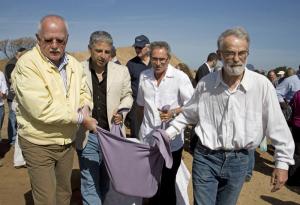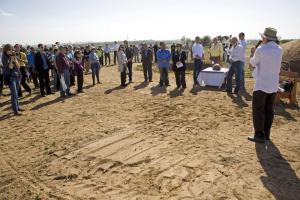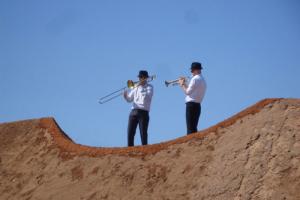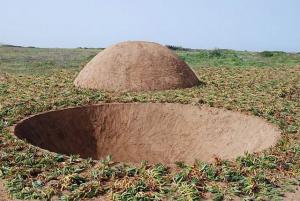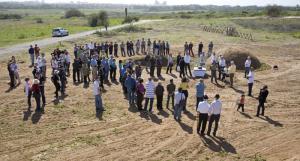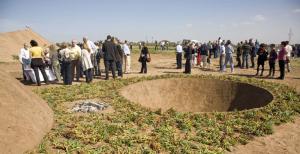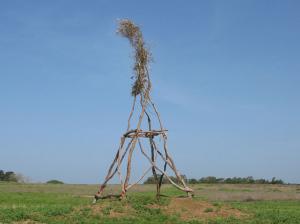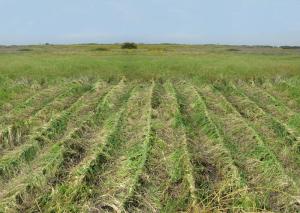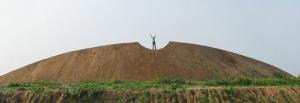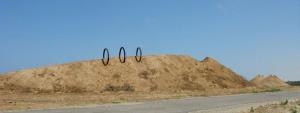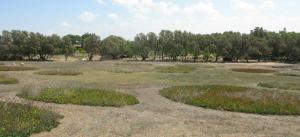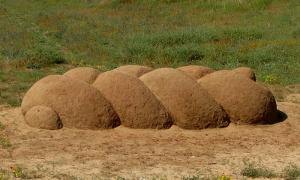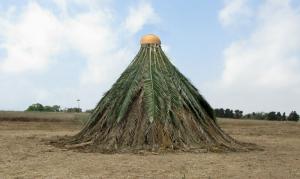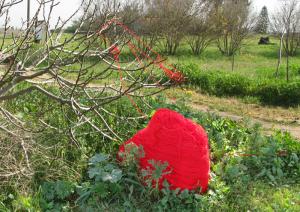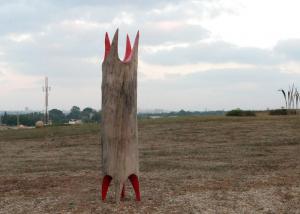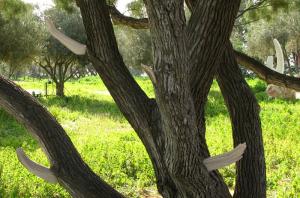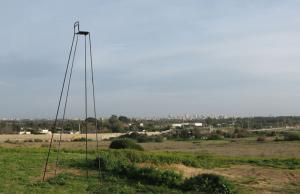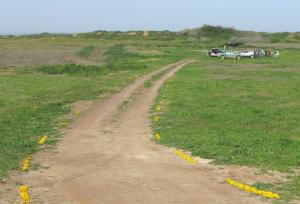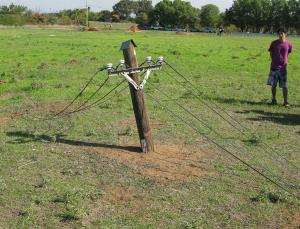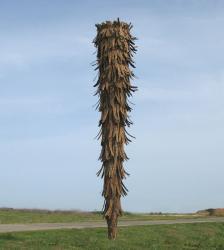The words of Russian poet Anna Akhmatova appropriately depict the activities at the Green Gallery, which has been active in the open fields of Arsuf Kedem for the past three years.
"I wish you knew the kind of garbage heap
Wild verses grow on, paying shame no heed"
Anna Akhmatova
The Gallery group members have literally cleaned up the large garbage heap that has collected for years in the fields, and have turned the area into a park for Nature Art.
Fossils, bones, and pieces of pottery remain on the land of Arsuf Kedem, as remnants of early civilizations. The current civilization adds to these ancient relics modern materials such as nylon, concrete, and other items used for agricultural and construction purposes.
"Observation Spot" by artists Danny Manheim and Tanya Preminger, was added to the gallery's collection this year; it is constructed of materials reminiscent of human activity in both a physical and metaphorical sense.
The theme of remnants is also prevalent in the works of Ada Moran Riess and Gila Croker; "Poinciana" and "Fan" are composed of leftover trimmed gardening foliage.
American sculptor Avital Oz is displaying his work with the Green Gallery for a second year. His work involves the theme of cyclicality -- the layering of time -- and displays perpendicular rings that repeat themselves.
Artist Ojars Feldbergs is performing "The Planting of a Stone Seed". Besides presenting this piece for several years in his homeland of Latvia, Feldbergs has also brought it to countries such as Norway, Belgium, Vietnam, and Italy. The stone that the artist brought to Israel has absorbed the thoughts and hopes that the Latvian people wish to become materialized in the Holy Land. (This ritual reminds us of the tradition to place small notes in the crevices of the Western Wall.) Feldbergs places the stone in the center of his work, made out of earth, symbolizing the principle of balances -- fullness versus emptiness.
The above pieces were created by old-school artists active in the fields of Land Art or Landscape art. Additional works were produced by a younger generation -- students from Shenkar Art School-- representing the most recent layer of time. These students are free of old conceptions of shape, space, and the like. Those works could be called Installations, a story, or a reflection of its environment, and they will die long before their creators, since the acceleration is the most prominent feature of contemporary art.
Students participating in the event are: Ohad Lustergarten ("Separating Flowers"), Doron Livne and Boaz Levi ("Electricity Line"), Rotem Ben Shalom and Yossi Barhom ("Red Wool"), Ziv Lichi and Yaara Landau ("Prosthetic"), Gabriel Rokober and Chen Shweizki ("Pedestal"), and Sharona Merlin and Lior Rokah ("Barcode").
Curator: Tanya Preminger.
